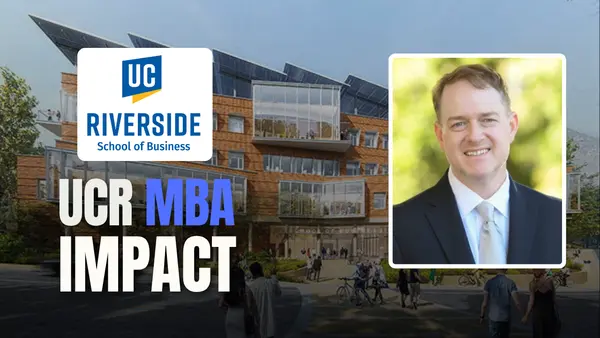Events & Promotions
|
|

GMAT Club Daily Prep
Thank you for using the timer - this advanced tool can estimate your performance and suggest more practice questions. We have subscribed you to Daily Prep Questions via email.
Customized
for You
Track
Your Progress
Practice
Pays
Not interested in getting valuable practice questions and articles delivered to your email? No problem, unsubscribe here.
- Nov 20
07:30 AM PST
-08:30 AM PST
Learn what truly sets the UC Riverside MBA apart and how it helps in your professional growth - Nov 22
11:00 AM IST
-01:00 PM IST
Do RC/MSR passages scare you? e-GMAT is conducting a masterclass to help you learn – Learn effective reading strategies Tackle difficult RC & MSR with confidence Excel in timed test environment - Nov 23
11:00 AM IST
-01:00 PM IST
Attend this free GMAT Algebra Webinar and learn how to master the most challenging Inequalities and Absolute Value problems with ease. - Nov 25
10:00 AM EST
-11:00 AM EST
Prefer video-based learning? The Target Test Prep OnDemand course is a one-of-a-kind video masterclass featuring 400 hours of lecture-style teaching by Scott Woodbury-Stewart, founder of Target Test Prep and one of the most accomplished GMAT instructors.
Kudos
Bookmarks
C
Be sure to select an answer first to save it in the Error Log before revealing the correct answer (OA)!
Difficulty:
 85%
(hard)
85%
(hard)
Question Stats:
52% (02:11) correct 48%
(02:24)
wrong
48%
(02:24)
wrong  based on 7515
sessions
based on 7515
sessions
History
Date
Time
Result
Not Attempted Yet
Professor: A marine biologist argues that transmission of sea lice from farm salmon to wild salmon is unlikely in the Broughton Archipelago, British Columbia, citing numerous studies suggesting that salinities less than 30 parts per thousand are unfavorable to sea-lice survival. The biologist concludes that the archipelago's 25–30 parts per thousand salinity range between March and June, the critical period for wild salmon migration, tends to suppress sea-lice proliferation. But a review of the literature shows that salinities of 25–30 parts per thousand in combination with British Columbia's cool spring temperatures favor the flourishing of sea lice.
In this passage, the professor attempts to undermine the biologist's argument by
A. pointing out that a condition claimed to be necessary for sea-lice survival is not sufficient for it
B. citing studies that suggest that salinity levels were not measured reliably
C. claiming that there is evidence showing that one of its premises is false
D. questioning the reliability of the biologist's scientific sources
E. showing that its conclusion is inconsistent with its premises
CR81021.02
In this passage, the professor attempts to undermine the biologist's argument by
A. pointing out that a condition claimed to be necessary for sea-lice survival is not sufficient for it
B. citing studies that suggest that salinity levels were not measured reliably
C. claiming that there is evidence showing that one of its premises is false
D. questioning the reliability of the biologist's scientific sources
E. showing that its conclusion is inconsistent with its premises
CR81021.02
Kudos
Bookmarks
jackky
The marine biologist's conclusion is that "transmission of sea lice from farm salmon to wild salmon is unlikely in the Broughton Archipelago, British Columbia." His/her evidence for this conclusion is that:
- Numerous studies suggest that salinities less than 30 parts per thousand are unfavorable to sea-lice survival.
- The archipelago has a salinity range of 25–30 parts per thousand between March and June, the critical period for wild salmon migration
- These conditions tend to suppress sea-lice proliferation
Notice that even though the word "concludes" is used later in the passage, the marine biologist's ACTUAL conclusion is stated in the first sentence. All of the subsequent information is there to SUPPORT the claim that "transmission of sea lice from farm salmon to wild salmon is unlikely in the Broughton Archipelago, British Columbia." In this context, "concludes" just links one supporting premise to another.
Then, the professor (not the marine biologist) states: "But a review of the literature shows that salinities of 25–30 parts per thousand in combination with British Columbia's cool spring temperatures favor the flourishing of sea lice."
This statement attacks a premise of the biologist's argument: that the conditions in the Broughton Archipelago "tend to suppress sea-lice proliferation."
So, how exactly does the professor undermine the biologist's argument?
Quote:
The biologist never discusses a condition that is necessary for sea-lice survival -- he/she only talks about a condition (low salinity) that is unfavorable to sea-life survival.
Even if you squint your eyes really hard and say that the biologist's argument implies that somewhat higher salinity is necessary for survival, that would not be totally accurate. At most, we can infer that higher salinity is more favorable to sea-lice survival, which is different than the condition being absolutely necessary. Because the biologist never claims that anything is absolutely necessary to sea-lice survival, it is not accurate to say that the professor undermines such a claim.
Eliminate (A).
Quote:
The professor doesn't think that the salinity measurements were inaccurate -- in fact, he/she uses the same numbers in his/her own argument. Eliminate (B).
Quote:
The biologist thinks that sea lice transmission is unlikely because the conditions in the archipelago "tend to suppress" sea-lice proliferation. The professor provides additional information, and then says that, actually, the conditions "favor the flourishing of sea lice."
Because the information provided by the professor completely contradicts the biologist's premise, we can determine that this additional evidence shows that the biologist's premise is false.
(C) is looking good.
Quote:
The professor never questions WHERE the biologist got his/her information, or the validity of those sources. (D) is out.
Quote:
Nope, the professor doesn't attack the connection between the biologist's conclusion and premises. Instead, he/she provides additional evidence to attack a premise, which in turn calls the biologist's conclusion into question.
(E) is out and (C) is the correct answer.
I hope that helps!
Kudos
Bookmarks
parkhydel
Prethinking: he gave a new example/evidence to disprove something
A)He didn't point out this , he rather gave a new example/evidence to disprove something
B) Reliable measurements were not at all discussed
D)He didn't question the source, he rather gave a new example/evidence to disprove something
E) He didn't say conclusion is inconsistent wrt premises
C. claiming that there is evidence showing that one of its premises is false: this is what he did as per the argument. He did this to undermine the Biologist's argument.
For better understanding this I marked Red: Biologist's premise and Green:Professor's conclusion( undermined) in the question.
Hope this helps.
Pls. HIT KUDOS
(need few kudos for needs













